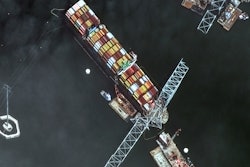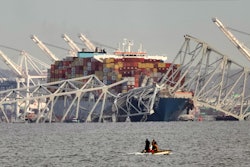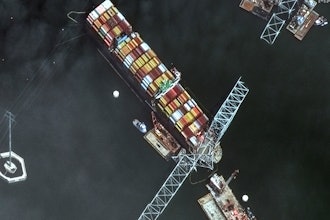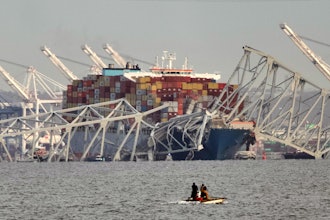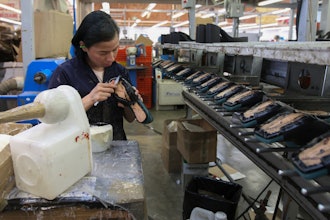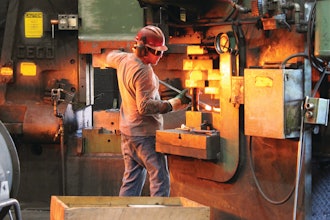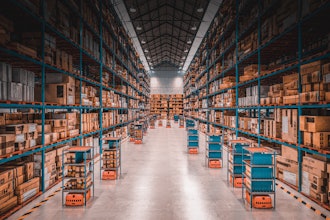Logisitcs is the life blood of the industrial channel, drawing raw materials in and pumping finished products out to the end user. Mark Humphlet, a director of marketing at Infor, took some time to talk to Industrial Distribution about the current state of logistics and where it’s heading.
Can you talk a little bit about the State of Logistics Report released by the Council of Supply Chain Management Professionals?
Mark Humphlet : The report comes out every year and talks about where the current state of logistics is at. Currently, it's been growing at about the same rate and plans to grow at the same rate as it has the last couple of years. The report talks about some of the trends that are going on in regards to the world. It includes information on where freight sectors are overcapacity, the volatility in demand, inventory levels that are impacting the way that logistics providers try to manage the services that they offer and the impact of the manufacturing sector orders that drive the way logistics providers run their operations—like when trucking is near capacity or there are driver shortages.
What problems are companies dealing with in terms of logistics?
Humphlet : One of the bigger things industrial companies are dealing with is around how to manage the overall supply chain and the responsiveness throughout the supply chain. As customers are placing orders, a manufacturer needs visibility across not only their own inventory levels, but also across their outsourced fulfillment or third party logistics companies. They have to overcome the invisibility of inventory levels throughout the supply chain in order to quickly make decisions based upon relevant information. Maintaining that visibility across the extended supply chain helps companies see the inventory they have in-house, at a warehouse, and at a third-party logistics provider to meet ever-changing demands.
I think that is a key piece that manufacturers have to deal with and then how to respond when they see inventory levels drop, they can up production or determine if that particular product is going to be replaced with another one along the way. Manufacturing companies are developing SOPs to manage the overall capacity within their operations—from understanding when they need to bring in more supply to how much inventory they’ll need to keep meet those requirements for their customers.
What are some of the norms that are changing in logistics right now?
Humphlet : We see a lot more on the collaboration side. It used to be that a company would have a particular product that they would release and sell it until that particular lifecycle was done. I think now you see a lot more collaboration between manufacturing companies and consumers or end users. Today, customers want a lot more choice and flexibility in configurations. Because of that, companies have many more new product introductions, so the overall lifecycle of a particular product may be long. Companies could end up with the potential of obsolete inventory unless they plan very carefully before changes in demand from customers happen. Being able to have different products and components that can go into multiple products to avoid a lot of excess inventory is crucial.
How can companies take advantage of inventory visibility for their company?
Humphlet : Inventory visibility allows a company to have a lot more flexibility in their operation so they can switch production over to different products or shift inventory to different locations depending on the demand. In today's global operations, positioning inventory in proper locations is a tremendous benefit especially if you try to incorporate the cost of logistics moving products around. You don't want to be shipping things next day air freight across the country all the time. It makes much more sense to have a full truckload of goods shipped across the country in bulk and stocked at a warehouse to have it on hand. That's where supply chain modeling and understanding your overall network is vitally important for manufacturing, as well as for logistics companies. To be able to see where demand and inventory for certain products is allows companies to best position and ship products throughout the supply chain in the logistics network.
Where is logistics heading?
Humphlet : I see logistics expanding its capabilities of being able to offer more services. Logistics is going to continue to play a key role in the global manufacturing operations just because it's so critical in the movement of goods. For example, to be able to understand the impact that increasing the capacity of the Panama Canal is going to have overall on freight logistics will be crucial. Companies need to know what the overall change in manufacturing capabilities in North America versus anyplace else is, so they know when they should produce more. It will help them manage their inventory levels, know where the key demand is and know where the growth is going to be.
Logistics is never going to go away. Companies will ask service providers to evolve with them as they try to be proactive to meet the requirements and demands of manufacturing companies worldwide.
Infor just recently put together a white paper on Ryder using some of our technology. It's a good mix between how manufacturing companies and logistics providers marry up the requirements and understanding of the impact on inventory for an organization. It also shows how to best manage those inventories levels and how to collaborate on these key main stakeholders within the supply chain.
To read the white paper on Ryder and how Infor’s technology helped the company, click here.





